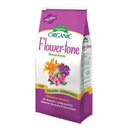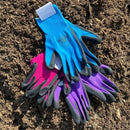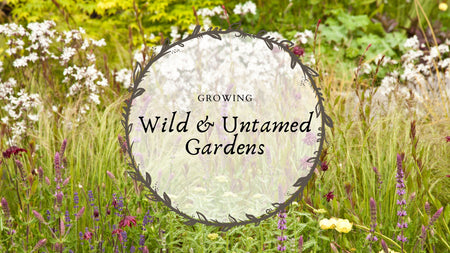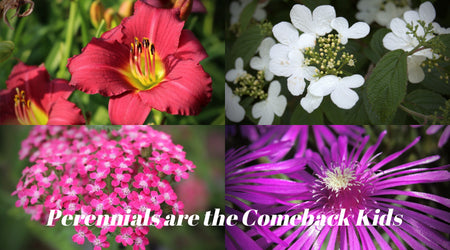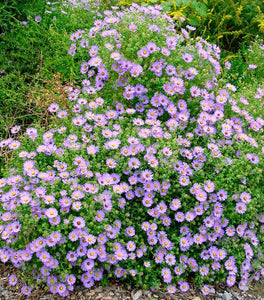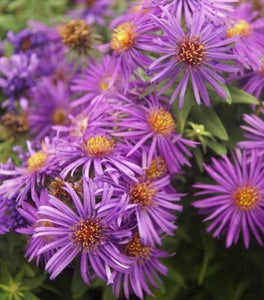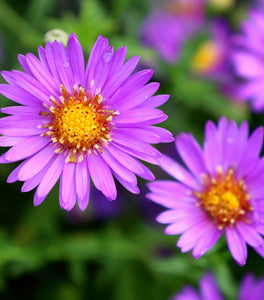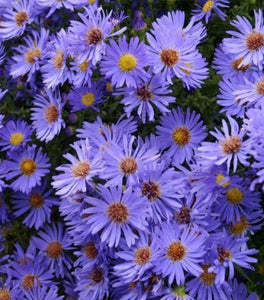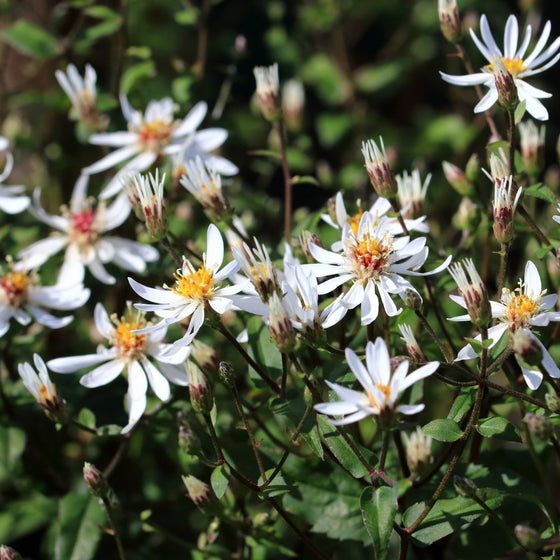
Images Depict Mature Plants
Woodland Aster Perennials for Sale Online
The white wood aster produces a profusion of small white daisies that start in the fall and lasts well past the last frost. White Wood Aster is a favorite host plant for caterpillars of the Pearl Crescent and Checkerspot Butterflies.
Eurybia divaricata was one of 7 asters that received the highest rating in the Chicago Botanic Gardens trials of asters. According to the study, Eurybia divaricata displayed consistently strong habits, superior flower production, excellent disease resistance, and full winter hardiness throughout a six-year evaluation term.
Unlike most other species of Fall Aster, White Wood Aster is suitable for shady sites. A North American native wildflower, this grows well under shrubs and at the edge of woodland gardens. It forms a low mound of bright green leaves, bearing upright stems of small white daisies, held on dark stems. Also tolerates sunny locations, and will naturalize well in the woodland or meadow garden. Although not yet widely grown, this species deserves much wider use in North American gardens and landscapes.
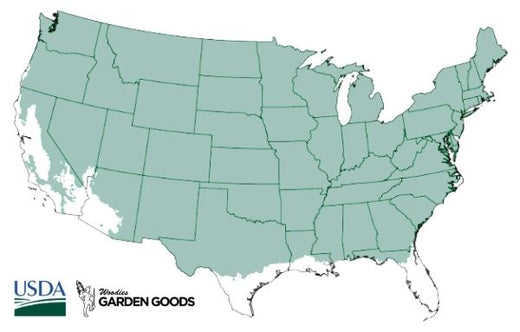
| Hardiness Zone: | 3-8 |
|---|---|
| Mature Height: | 2 to 3 feet |
| Mature Width: | 2 to 2.5 feet |
| Classification: | Herbaceous Perennial |
| Sunlight: | Part Sun to Full Shade |
| Habit: | Upright, clump forming |
| Flower Color: | White with yellow to red centers |
| Flowering Season: | August to September |
| Foliage: | Bright Green |
| Soil Condition: | Prefers dry, average to sandy soil, wont tolerate wet soil in winter |
| Water Requirements: | Water well until established |
| Uses: | Extremely attractive when used as a focal point in the mixed border, mass planting. Attracts pollinators and hummingbirds |
How to Care for White Wood Aster
Be sure to read our planting instructions to ensure a healthy and happy plant for years to come!



